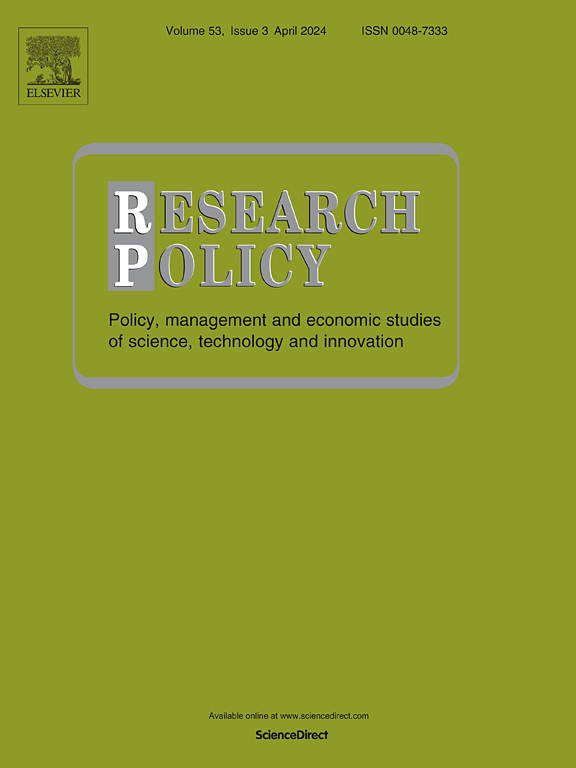公共研发资助是否加剧了地区差距?探索欧洲公共和商业研发支出的地理变化
IF 8
1区 管理学
Q1 MANAGEMENT
引用次数: 0
摘要
研发投资集中在本地能力较强的地区,有助于这些地区在创新经济中进一步领先,从而加剧了空间不平等。虽然越来越多的人意识到创新的地理黑暗面,但公共研发资金的作用在很大程度上被忽视了。然而,公共研发资金的意外空间效应往往远远超过区域政策的影响(Sternberg, 1996)。公共研发支出通常集中在发达地区,这意味着它在实践中可能作为一种反区域政策起作用(Forth和Jones, 2020)。本文使用欧盟统计局2009年至2018年200个地区的数据,研究了欧洲次国家地区公共研发资金的地理分布及其随时间的发展。首先,本文考察了哪些地区吸引了公共研发资金。更发达的地区往往会获得更多的公共研发资金,主要是因为他们有更高的商业研发资金和人力资本。其次,分析了公共研发经费是否存在区域趋同现象。公共研发支出存在无条件的β收敛,但没有sigma收敛的证据。对于企业研发支出,初始差异较大,但有证据表明贝塔和西格玛收敛。本文的结论是,公共研发资金倾向于将资源导向条件较好的地区,并且没有西格玛收敛的迹象。解决区域不平等和创新黑暗面的研究和政策应更多地关注公共研发资金的空间分布。本文章由计算机程序翻译,如有差异,请以英文原文为准。
Does public R&D funding reinforce regional disparities? Exploring the changing geography of public and business R&D expenditure in Europe
The concentration of R&D investments in regions with strong local capabilities helps these regions pull further ahead in the innovation economy, driving spatial inequality. While there is growing awareness of this geographic dark side of innovation, the role of public R&D funding has largely been overlooked. Yet, the unintended spatial effects of public R&D funding tend to far outweigh the impacts of regional policy (Sternberg, 1996). Public R&D spending is often concentrated in developed regions, meaning that it may in practice work as an anti-regional policy (Forth and Jones, 2020). This paper examines the geography of public R&D funding in European subnational regions and its development over time, using data from Eurostat for 200 regions between 2009 and 2018. First, the paper examines which regions attract public R&D funding. More developed regions tend to receive more public R&D funding, mainly because of their higher business R&D funding and human capital. Second, the paper analyses whether public R&D funding is converging across regions. There is unconditional beta-convergence in public R&D expenditure but no evidence of sigma-convergence. For business R&D expenditure, the initial disparities are higher but there is evidence of both beta- and sigma-convergence. The paper concludes that public R&D funding tends to direct resources towards more well-endowed regions and shows no signs of sigma-convergence. Research and policy addressing regional inequality and the dark side of innovation should pay more attention to the spatial distribution also of public R&D funding.
求助全文
通过发布文献求助,成功后即可免费获取论文全文。
去求助
来源期刊

Research Policy
MANAGEMENT-
CiteScore
12.80
自引率
6.90%
发文量
182
期刊介绍:
Research Policy (RP) articles explore the interaction between innovation, technology, or research, and economic, social, political, and organizational processes, both empirically and theoretically. All RP papers are expected to provide insights with implications for policy or management.
Research Policy (RP) is a multidisciplinary journal focused on analyzing, understanding, and effectively addressing the challenges posed by innovation, technology, R&D, and science. This includes activities related to knowledge creation, diffusion, acquisition, and exploitation in the form of new or improved products, processes, or services, across economic, policy, management, organizational, and environmental dimensions.
 求助内容:
求助内容: 应助结果提醒方式:
应助结果提醒方式:


